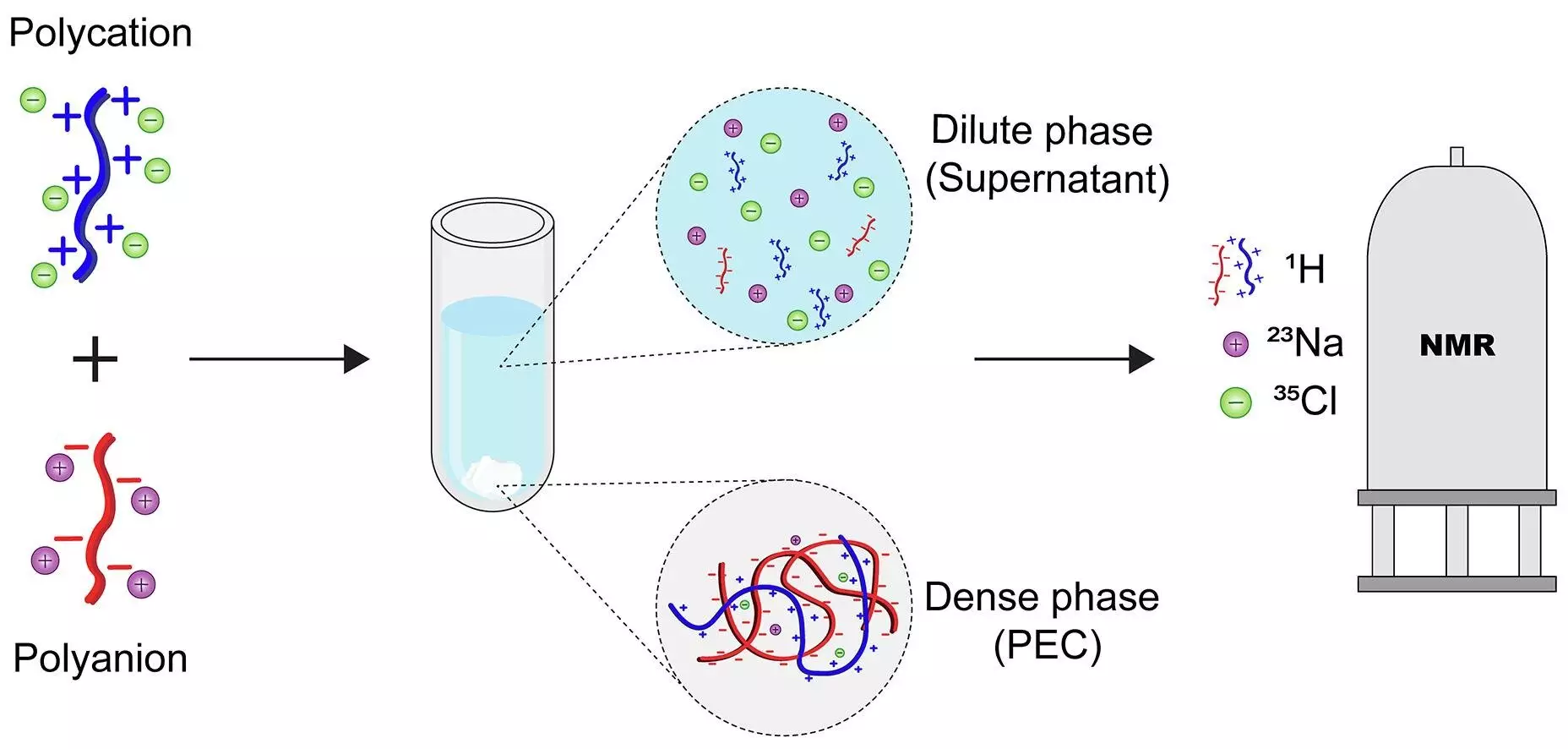For decades, scientists have been captivated by the dynamic interactions of polyelectrolytes—proteins and synthetic polymers bearing multiple charges—due to their vast potential in creating advanced materials. When oppositely charged polymers meet in a solution, they tend to spontaneously separate into distinct phases, forming intricate complexes that are pivotal in multiple high-tech applications. Yet, until recently, the detailed internal landscape of these complexes, specifically the exact distribution of polymers and counterions within each phase, remained a frustrating mystery. This gap hampered efforts to optimize materials like water filtration membranes, ion exchange systems, and other bio-inspired structures.
The breakthrough emerges from a dedicated research team at the University of Twente, who have pioneered a method that radically enhances our capacity to resolve this complexity. By leveraging Nuclear Magnetic Resonance (NMR) spectroscopy, they can now pinpoint the precise localization of individual components within each phase, transforming a previously opaque system into a transparent blueprint. This isn’t just about incremental advances; it represents a fundamental leap that could catalyze major innovations across multiple fields.
From Black Box to Clear Map: The Power of NMR in Polyelectrolyte Research
Historically, analyzing the composition of polyelectrolyte complexes was laborious, often relying on indirect methods that could only approximate the makeup of each phase. The newly developed protocol introduced by the Twente team shatters these limitations. Their approach is rapid—completing comprehensive analysis in under 40 minutes—and non-invasive, preserving the integrity of delicate complexes during measurement. The use of label-free NMR ensures that the natural structure and behavior of the complexes remain unperturbed.
What makes this innovation particularly compelling is its universality. It isn’t limited to synthetic systems; natural polyelectrolyte complexes, which play crucial roles in biological processes, can now be studied with this technology. This opens exciting avenues in biochemistry and medicine, potentially illuminating mechanisms underlying cellular functions, bio-membranes, and disease-related aggregations.
Furthermore, characterizing the distribution of counterions—the often-overlooked spectator ions—predicts how these complexes behave under different conditions. This granular understanding paves the way for designing smarter, more adaptable materials. For instance, filtration membranes can be optimized for faster water flow, with a better handle on selectivity and durability. Similarly, ion-exchange materials can be fine-tuned for higher efficiency, reducing costs and environmental impact.
Implications for Material Innovation and Natural Processes
This development is more than a technical milestone; it challenges long-held assumptions about the simplicity of polyelectrolyte systems. Previously, models suggested a somewhat uniform distribution of components within phases, but now we see that the reality is far more nuanced. This newfound complexity can be harnessed to engineer materials with precisely controlled microstructures, tailored to specific needs.
Moreover, understanding natural polyelectrolyte complexes—such as those involved in cellular scaffolding or extracellular matrices—becomes more accessible. These insights could revolutionize regenerative medicine, drug delivery, or synthetic biology by creating biomimetic materials that emulate nature’s efficiency and adaptability.
However, it’s critical to view this advancement through a cautious lens. While the technique is powerful, integrating it into industrial practice will require further validation, scalability, and cost-effective deployment. Researchers and developers must also be wary not to overlook the importance of environmental factors—temperature, ionic strength, pH—that influence complex behavior in real-world scenarios.
This research ultimately reminds us that even phenomena studied for nearly a century still possess secrets awaiting discovery. The integration of cutting-edge NMR spectroscopy into the toolkit of polymer science holds the promise of a new era in material design—where we not only observe these complexes but understand and control them at a molecular level. If harnessed wisely, this could lead to smarter, more sustainable technologies that profoundly benefit society.

